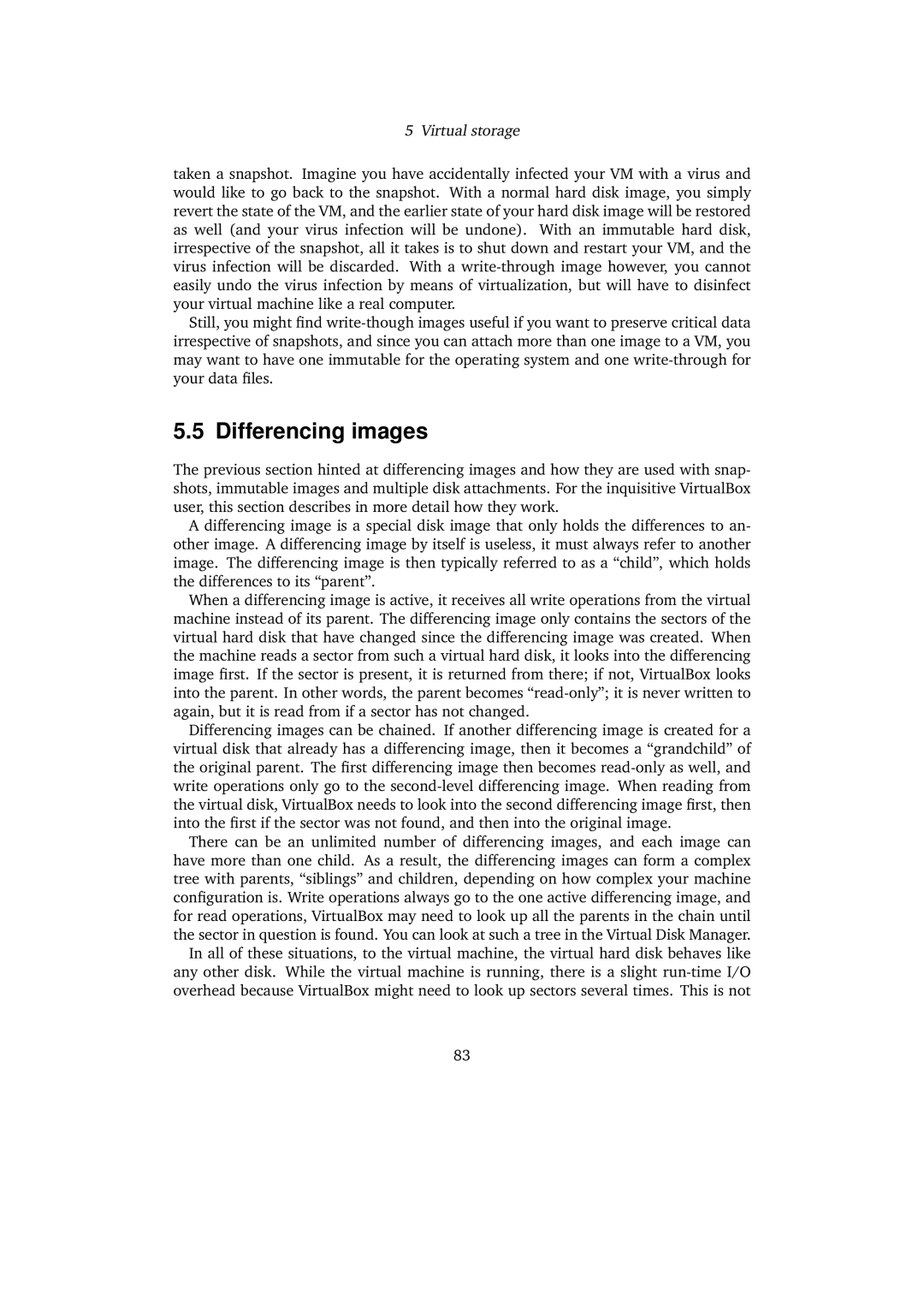5 Virtual storage
taken a snapshot. Imagine you have accidentally infected your VM with a virus and would like to go back to the snapshot. With a normal hard disk image, you simply revert the state of the VM, and the earlier state of your hard disk image will be restored as well (and your virus infection will be undone). With an immutable hard disk, irrespective of the snapshot, all it takes is to shut down and restart your VM, and the virus infection will be discarded. With a
Still, you might find
5.5 Differencing images
The previous section hinted at differencing images and how they are used with snap- shots, immutable images and multiple disk attachments. For the inquisitive VirtualBox user, this section describes in more detail how they work.
A differencing image is a special disk image that only holds the differences to an- other image. A differencing image by itself is useless, it must always refer to another image. The differencing image is then typically referred to as a “child”, which holds the differences to its “parent”.
When a differencing image is active, it receives all write operations from the virtual machine instead of its parent. The differencing image only contains the sectors of the virtual hard disk that have changed since the differencing image was created. When the machine reads a sector from such a virtual hard disk, it looks into the differencing image first. If the sector is present, it is returned from there; if not, VirtualBox looks into the parent. In other words, the parent becomes
Differencing images can be chained. If another differencing image is created for a virtual disk that already has a differencing image, then it becomes a “grandchild” of the original parent. The first differencing image then becomes
There can be an unlimited number of differencing images, and each image can have more than one child. As a result, the differencing images can form a complex tree with parents, “siblings” and children, depending on how complex your machine configuration is. Write operations always go to the one active differencing image, and for read operations, VirtualBox may need to look up all the parents in the chain until the sector in question is found. You can look at such a tree in the Virtual Disk Manager.
In all of these situations, to the virtual machine, the virtual hard disk behaves like any other disk. While the virtual machine is running, there is a slight
83
